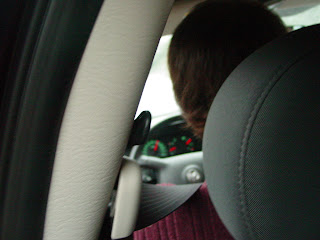the science behind out-of-body experiences
 Here's a New York Times article of interest. Research published today in Science examines how normal, healthy people can have out-of-body experiences.
Here's a New York Times article of interest. Research published today in Science examines how normal, healthy people can have out-of-body experiences.
Usually the various sensory systems of which we observe our environment (vision, touch, balance, etc.) work together to create our sense of being. Yet when one system is thrown off or is given inaccurate information that greatly differs from the other systems the brain may try to make sense of the mis-matched information. In fact, it may force a sense of being in a different body.
In one experiment, Dr. Olaf Blanke, a neuroscientist at the École Polytechnique Fédérale in Lausanne, asked participants to wear virtual reality goggles while an image taken of their backs was shown to them as being six feet in front of them. As this image was being projected, he simultaneously stroked their backs and their images' backs with a stick. If the two strokes occurred in sychronism, participants reported being inside the illusory body. When the strokes were not synchronous, there was no illusion. Strangely, when the image being projected was not of the participant, but instead of a mannequin dressed in the same clothes as the participant the illusion still occurred.
In a different but related experiment, Henrik Ehrsson, a neuroscientist from the Karolinska Institute in Stockholm, had participants sit while wearing goggles connected to two video cameras set up behind them. He then began to stroke each person's chest with a stick, while at the same time moving a second stick just under the camera lenses so that it seemed to stroke the virtual body. When both strokes were simultaneous, the illusion of being outside their bodies was reported by the participants.
This is some really cool stuff I must say. It definitely gives some interesting insight into what goes on during near-death experiences where people report a sense of being outside of their bodies. Usually in these types of experiences individuals go through serious trauma or injury. There's no telling what their brains are trying to make sense of in these situations. Though one point to make is that they usually report a feeling of floating over their bodies, whereas participants in the above experiments did not have such a strong sense of floating. Of course, that is what future research is all about . . . right?



No comments:
Post a Comment